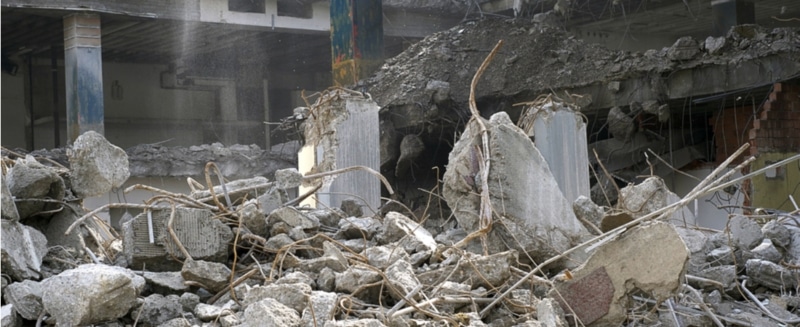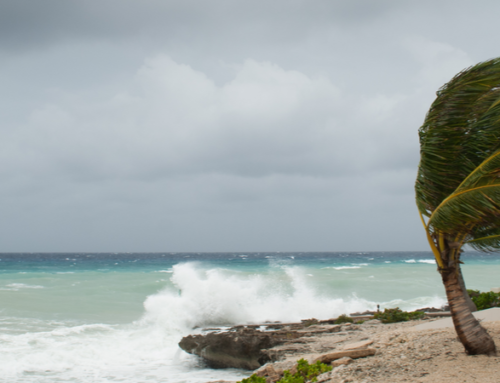By now, most of us are familiar with the devastating images of destruction caused by Superstorm Sandy. When it made landfall on October 29, 2012, near Brigantine, New Jersey, Sandy was considered the worst storm to hit the northeastern United States since the Great New England Hurricane of 1938, causing insured losses estimated at $25 billion. Nearly two-thirds of those losses—close to $17 billion—are likely to be commercial, according to a January report by A.M. Best.
Natural disasters like these are why small businesses need insurance.
Every year, small businesses are struck by disasters, including fires, earthquakes, hurricanes, and tornadoes—and too many of those businesses are not prepared. An August 2011 poll of small businesses by Wells Fargo found that less than a third (31 percent) of business owners said their businesses were “extremely” or “very prepared” for such disasters. Over half (54 percent) indicated they were not concerned about a disaster impacting their business. The Small Business Administration estimated that as many as 40 percent of small businesses hit directly by a serious natural disaster are forced to close their doors.
After a major catastrophe, it can take more time than many people anticipate to get a small business back on track. Prior to Sandy, many business owners failed to think about how they would manage if a hurricane damaged their premises, rendering it temporarily unusable. That’s why business income (BI)—also known as business interruption insurance—is so important.
What it covers
BI compensates you for lost income if your company has to vacate the premises due to disaster-related damage that is covered under your property insurance policy. It covers the profits you would have earned, based on your financial records, had the disaster not occurred. The policy also covers operating expenses, like utilities, that continue even though business activities have come to a temporary halt.
Business income typically comes into play if there is physical damage to the structure, though a few insurance companies now offer non-physical business interruption insurance, which insures for business interruption without a preceding physical loss. Depending on the policy, there is generally either a 48-hour or 72-hour waiting period before business interruption coverage kicks in.
If a business does not have physical damage coverage to its property but could not access the location due to an Order of Civil Authority, there could still be coverage for lost business. However, the order must be the result of a covered peril under the business owner’s policy. For business interruption to be triggered under civil authority, there also has to be some physical damage in the area where the property is located, and coverage typically lasts up to 30 days.
Other options to consider
If the business cannot operate due to the loss of power, there could be coverage under what is typically referred to as off-premises service interruption. This is usually an optional coverage offered as an endorsement to a property policy. In this scenario, the business owner does not have to have damage to the facility, but the power outage must have been caused by damage from a covered peril under the policy (such as wind, fire, or an electrical breakdown). If a business has extra income coverage, the policy will reimburse the sum of money the business spends, over and above normal operating expenses, in order to avoid having to shut down during the restoration period.
Businesses not physically affected by a disaster, but whose suppliers or customers are affected, are protected if they have contingent business interruption insurance. The fact is, many companies today are heavily dependent on raw materials from key suppliers to make the products they sell. If a supplier suffers a loss and cannot deliver products necessary to running the business, contingent business interruption insurance would help.
Let’s also not forget that the damage caused by Sandy was primarily caused by flood, not wind. Flooding is not covered under standard business owners policies unless specifically added as an endorsement (and it usually carries its own deductible), so it is important to check with your insurer or broker. Flood insurance is available from the federal government’s National Flood Insurance Program (NFIP) and a few private insurance companies. From 2007 to 2011, the average commercial flood claim was over $75,000, according to the NFIP. Business interruption coverage is not available under the NFIP.
For more information about preparing your business for a disaster, check out Open for Business: A Disaster Planning Toolkit for the Small Business Owner at the Insurance Institute for Business & Home Safety or visit the Small Business Administration website.
Loretta Worters is vice president with the Insurance Information Institute, a non-profit organization whose mission is to improve public understanding of insurance—what it is and how it works. Follow her on Twitter @LWorters.






